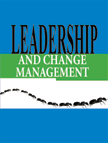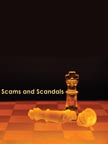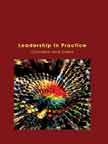Terry Leahy - Europe's Most Admired Leader
|
|
ICMR HOME | Case Studies Collection
Case Details:
Case Code : LDEN036
Case Length : 20 Pages
Period : 1995-2005
Pub Date : 2005
Teaching Note :Not Available
Organization : Tesco
Retail ing
Countries : UK
To download Terry Leahy - Europe's Most Admired Leader case study
(Case Code: LDEN036) click on the button below, and select the case from the list of available cases:

Price:
For delivery in electronic format: Rs. 400;
For delivery through courier (within India): Rs. 400 + Shipping & Handling Charges extra
»
Leadership and Entrepreneurship Case Studies
» Case Studies Collection
» ICMR HOME
» Short Case Studies
» View Detailed Pricing Info
» How To Order This Case
» Business Case Studies
» Area Specific Case Studies
» Industry Wise Case Studies
» Company Wise Case Studies

Please note:
This case study was compiled from published sources, and is intended to be used as a basis for class discussion. It is not intended to illustrate either effective or ineffective handling of a management situation. Nor is it a primary information source.
Chat with us

Please leave your feedback

|
|




<< Previous
Getting Awards and Recognition Contd...
|
Leahy was instrumental in turning Tesco around and making it the largest
retailer in the UK with a market share of 29% in the UK grocery market as of
January 2005 (Refer to Exhibit I for the market shares of major players in the
UK's grocery market). In terms of global rankings by revenues in 2003, Tesco
held sixth position, behind Wal-Mart, Carrefour, Home Depot, Metro, and Royal
Ahold (Refer to Exhibit II for the top ten players in global retailing). Leahy
had expanded Tesco's operations to include a wide range of businesses including
finance, clothing, consumer durables, reaching areas which were hitherto not
under the purview of food-retailers. Under Leahy's leadership, Tesco's revenues
increased from £16.45 billion in the fiscal 1997-98 to £37.07 billion in the
fiscal 2004-05.
|

|
During the same period, Tesco's net income rose from £532 million to £1,366
million (Refer to Table I for Tesco's financial performance under Leahy's
leadership and to Exhibit III for key financial statistics of Tesco). Under
Leahy, the stock price of Tesco more than doubled from 120 pence7
to 320 pence by June 2005 (Refer to Exhibit IV for Tesco's stock price
chart). By mid-2005, Tesco had a workforce of 237,000 in the UK – double the
size of the British Army.
|
|
Background Note
Tesco was founded by Jack Cohen (Cohen) in 1919 using his bonus received
from World War I army service. In 1924, Cohen bought a tea shipment from TE
Stockwell. The first three letters of TE Stockwell and the first two letters
of Cohen were used to form a brand 'TESCO.' The first Tesco store was opened
in 1929 in Edgware, London, and the first supermarket was opened in 1956 in
Maldon, Essex. The first superstore was opened in 1968 in Crawley, West
Sussex. Till the 1970s, several companies that Tesco had acquired like
Victor Value had not been properly integrated. Moreover, Tesco's stores were
small and ill-equipped. |
Tesco competed only on price and the goods available at its
stores were perceived to be of mediocre quality. Customers all over Britain were
becoming affluent and were looking not for bargains but for costly luxury
merchandise. To meet these changes in demand, Tesco closed down many of its
stores to concentrate on larger stores with better facilities. It went in for a
revamp of products and started to offer a wider range of goods and also to
concentrate on customer service and quality. Tesco began operating petrol pumps
in 1974. Even though Tesco went up-market, it tried to retain its image as a
company offering competitive prices...
Excerpts>>
|
|










